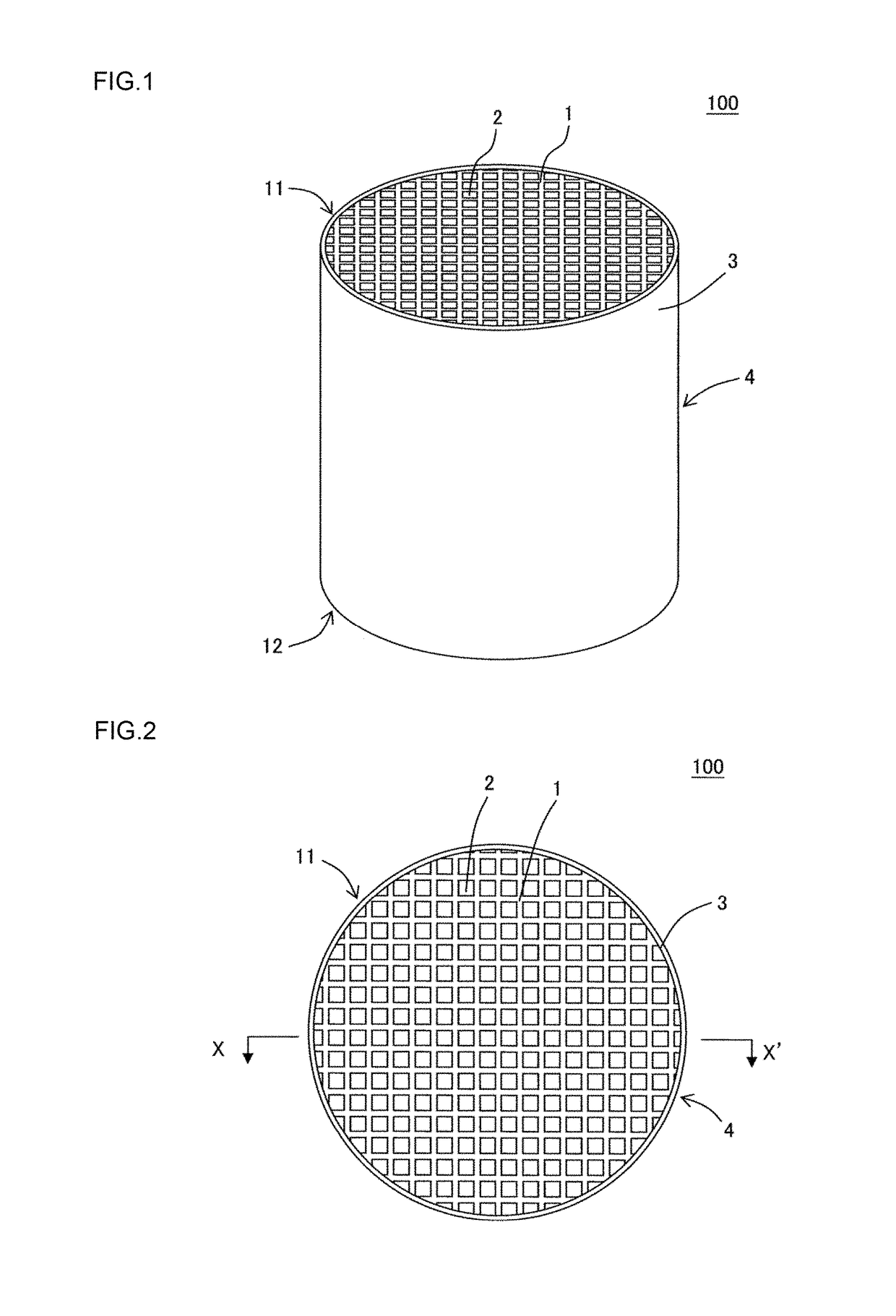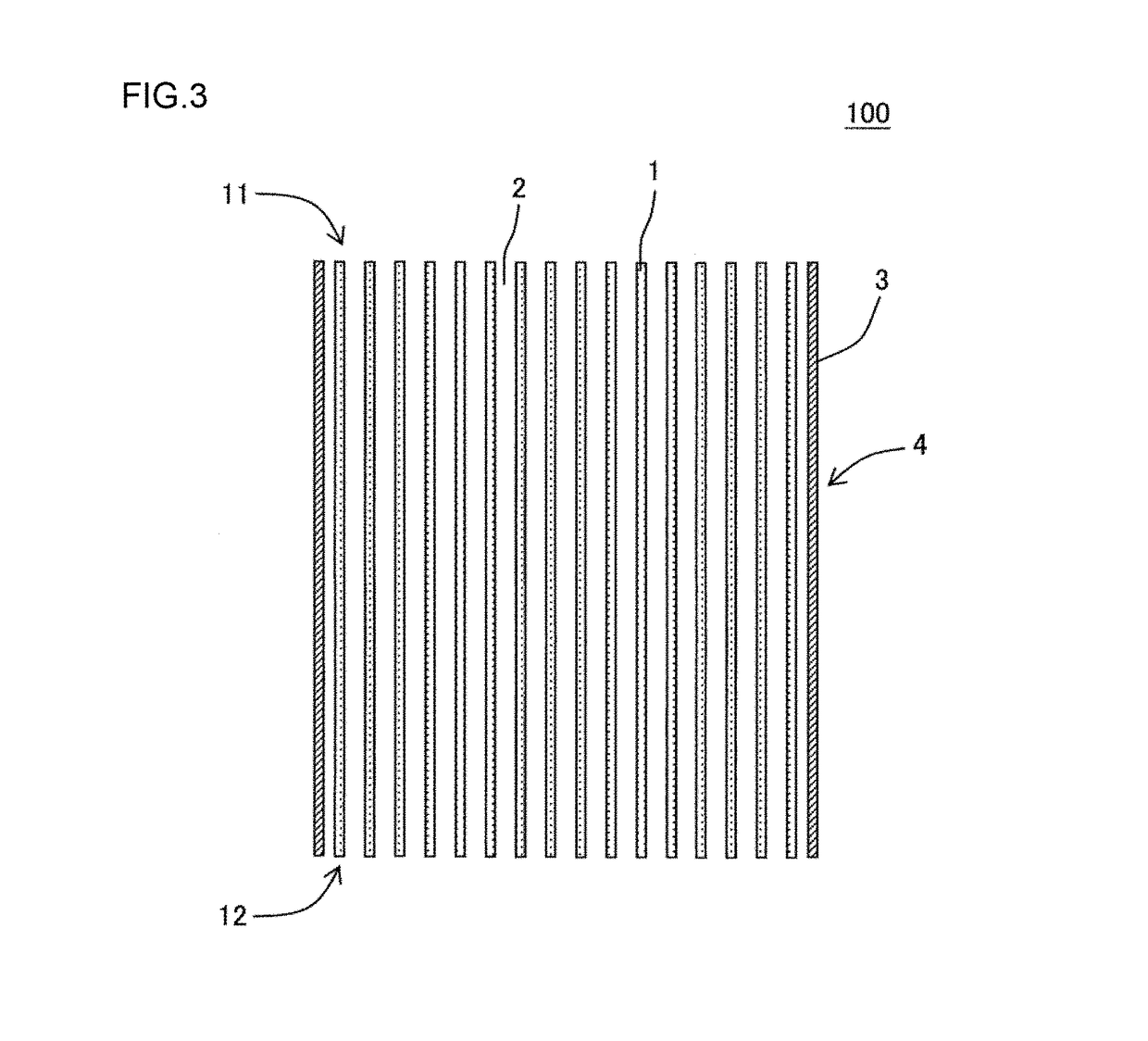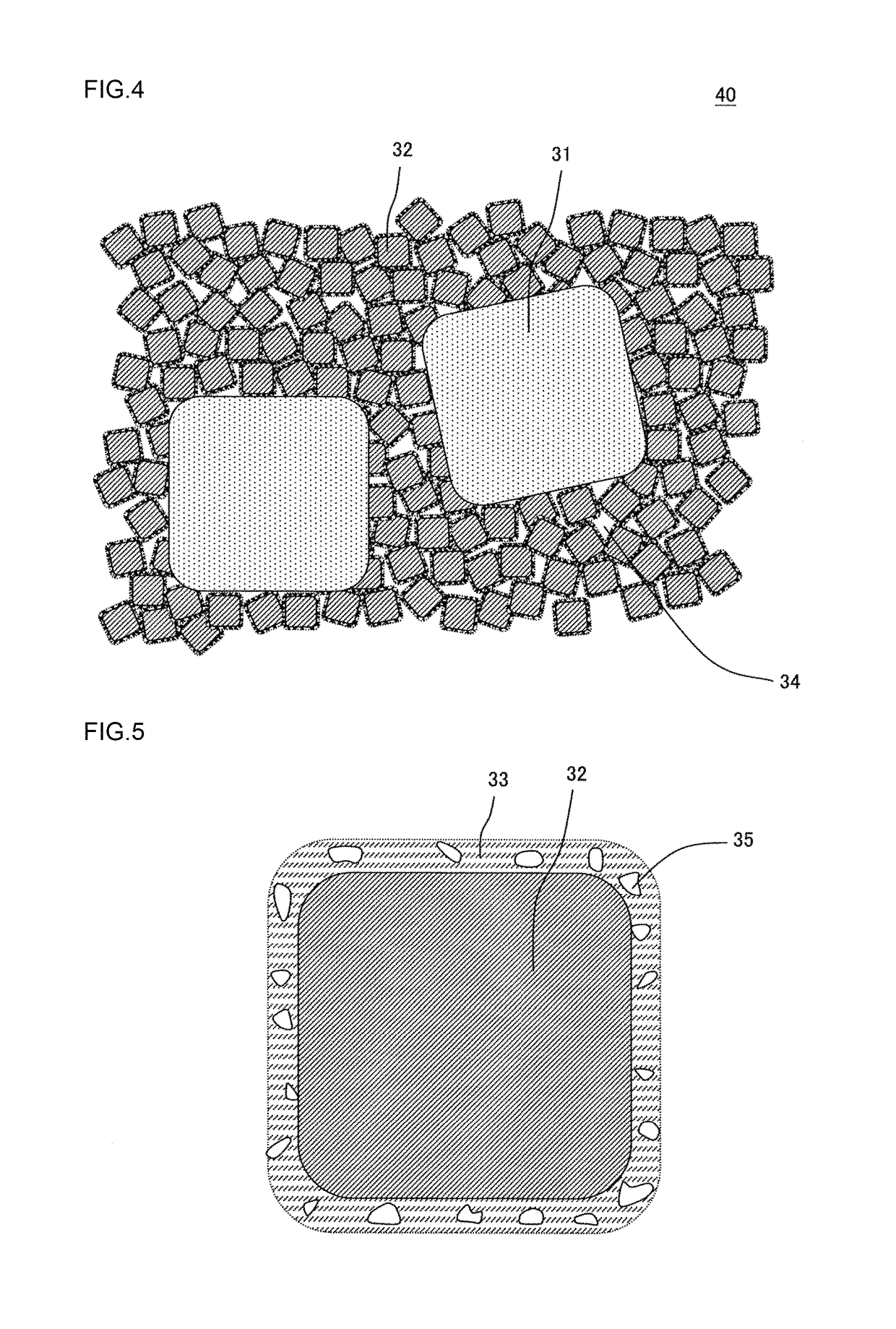Manufacturing method of honeycomb structure
a manufacturing method and honeycomb technology, applied in the field of manufacturing methods of honeycomb structures, can solve the problems of difficult to obtain the honeycomb structure having such a strength resistant to actual use, the ratio of zeolite to be included in the honeycomb structure decreases, and the purification performance of nox is excellent. , the effect of improving the agglomerating properties of inorganic bonding materials
- Summary
- Abstract
- Description
- Claims
- Application Information
AI Technical Summary
Benefits of technology
Problems solved by technology
Method used
Image
Examples
example 1
[0120]As a coarse particle zeolite, there was prepared SAPO-34 which was 4.1 mass % ion-exchanged with copper ions and in which an average particle diameter was 3.9 μm. Furthermore, as a fine particle zeolite, there was prepared a β-type zeolite which was 6.3 mass % ion-exchanged with copper ions and in which an average particle diameter was 0.4 μm. Table 1 shows the types and average particle diameters of the coarse particle zeolite and the fine particle zeolite used in Example 1. In “a column of zeolite” of Table 1, “Cu-SAPO-34” means SAPO-34 which was ion-exchanged with the copper ions. Furthermore, in “the column of zeolite” of Table 1, “Cu-β” means the β-type zeolite which was ion-exchanged with the copper ions. The average particle diameter of each zeolite was a median diameter (d50) in a particle diameter distribution of powder containing particles of each zeolite, and was measured by a laser diffraction scattering method which conformed to JIS R1629.
[0121]Furthermore, as an ...
examples 2 to 5
[0144]The procedure of Example 1 was repeated except that a formulation of a zeolite raw material was changed as shown in Table 2, to manufacture honeycomb structures. Additionally, in Examples 2 to 5, basic aluminum lactate was dissolved in a mass of water which was twice as much as a mass of basic aluminum lactate, and used.
examples 6 and 7
[0145]The procedure of Example 1 was repeated except that a formation of a zeolite raw material was changed as shown in Table 2, to manufacture honeycomb structures. Additionally, in Examples 6 and 7, basic aluminum lactate was dissolved in a mass of water which was twice as much as a mass of basic aluminum lactate, and used.
[0146]Additionally, in Example 6, the formation and procedure of Example 3 were used except that as a coarse particle zeolite, chabazite which was 5.0 mass % ion-exchanged with copper ions and whose average particle diameter was 4.4 μm was used, to manufacture the honeycomb structure. In Example 7, the formation and procedure of Example 6 were used except that as a fine particle zeolite, chabazite which was 5.0 mass % ion-exchanged with copper ions and whose average particle diameter was 0.6 μm was used, to manufacture the honeycomb structure.
PUM
| Property | Measurement | Unit |
|---|---|---|
| particle diameter | aaaaa | aaaaa |
| particle diameter | aaaaa | aaaaa |
| particle diameter | aaaaa | aaaaa |
Abstract
Description
Claims
Application Information
 Login to View More
Login to View More - R&D
- Intellectual Property
- Life Sciences
- Materials
- Tech Scout
- Unparalleled Data Quality
- Higher Quality Content
- 60% Fewer Hallucinations
Browse by: Latest US Patents, China's latest patents, Technical Efficacy Thesaurus, Application Domain, Technology Topic, Popular Technical Reports.
© 2025 PatSnap. All rights reserved.Legal|Privacy policy|Modern Slavery Act Transparency Statement|Sitemap|About US| Contact US: help@patsnap.com



